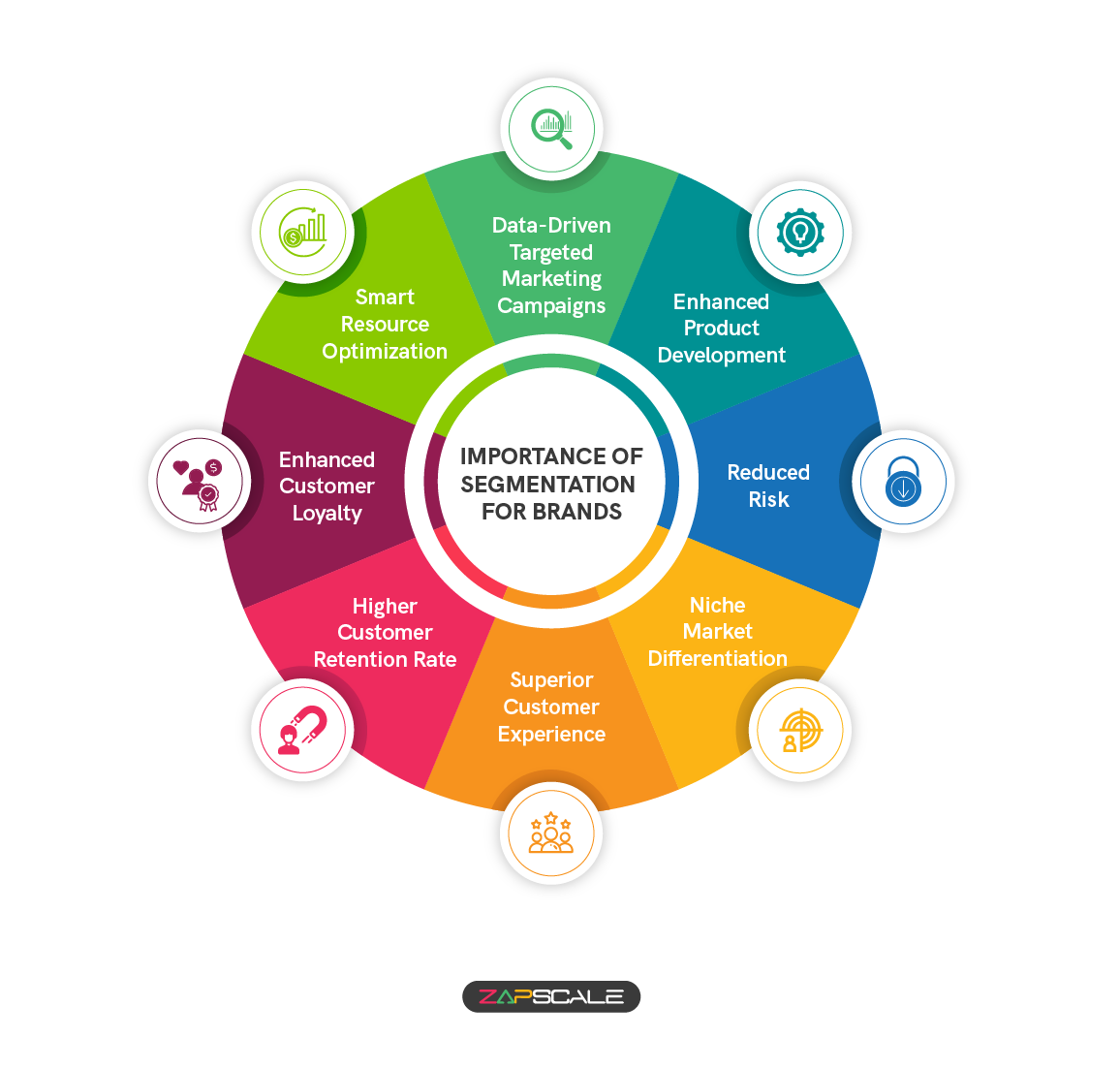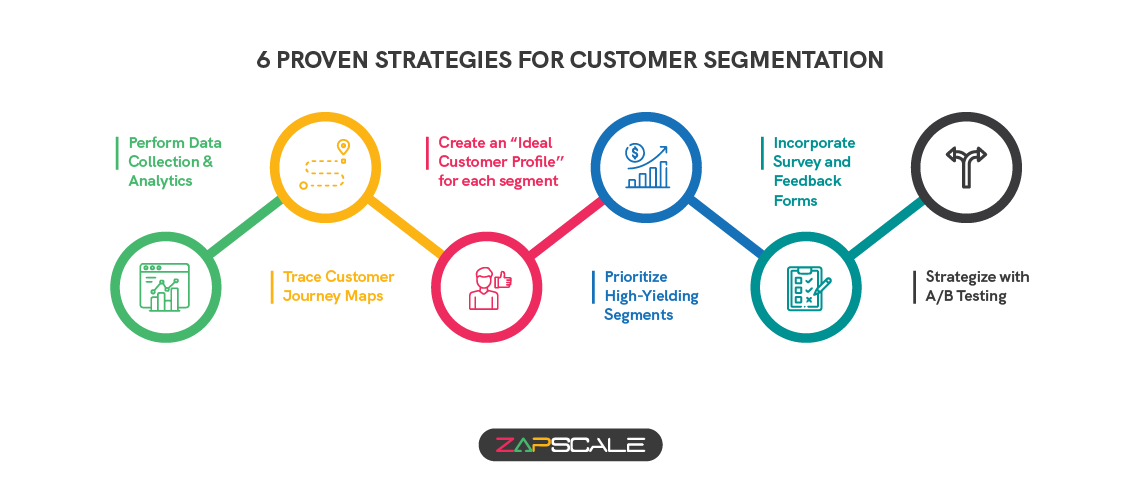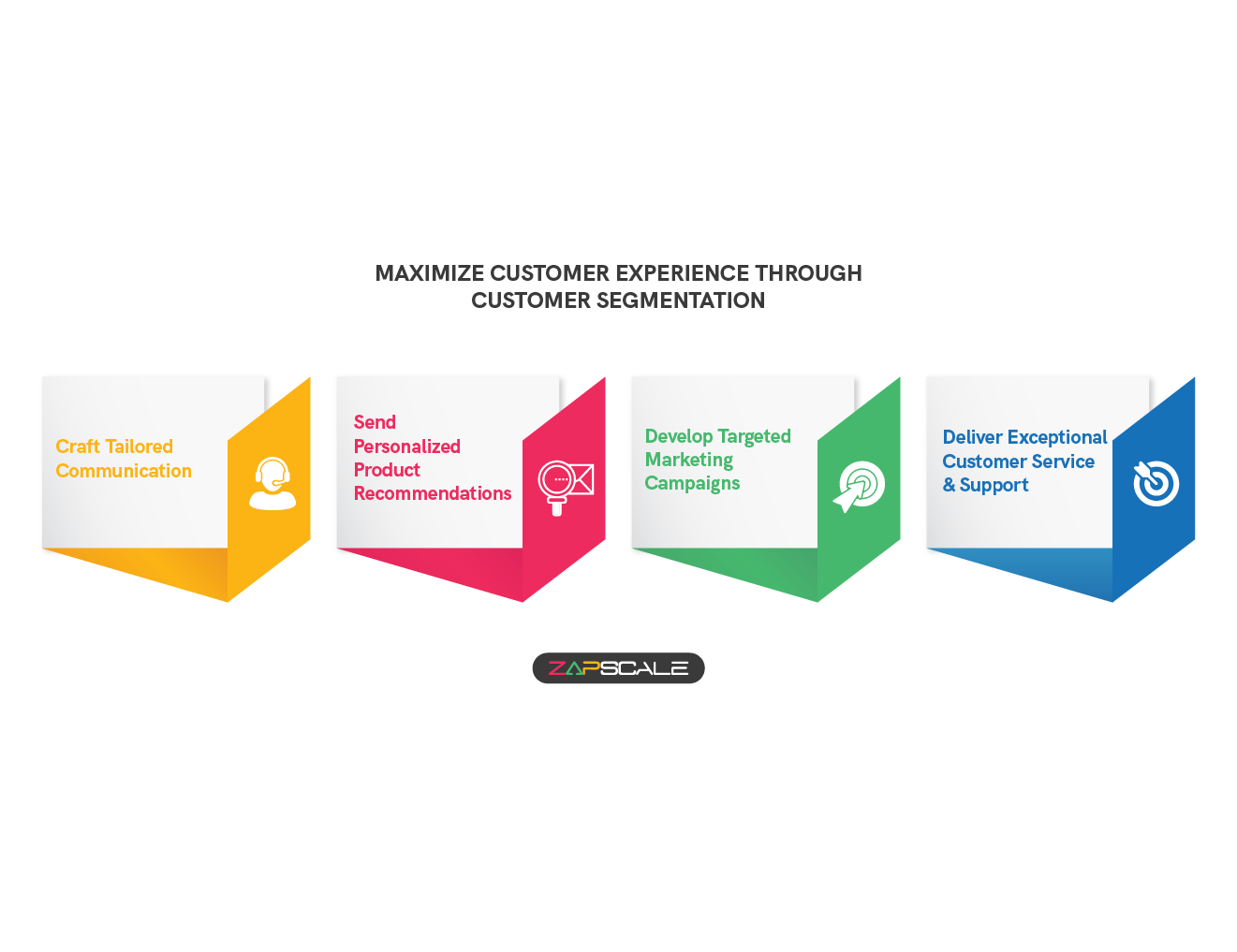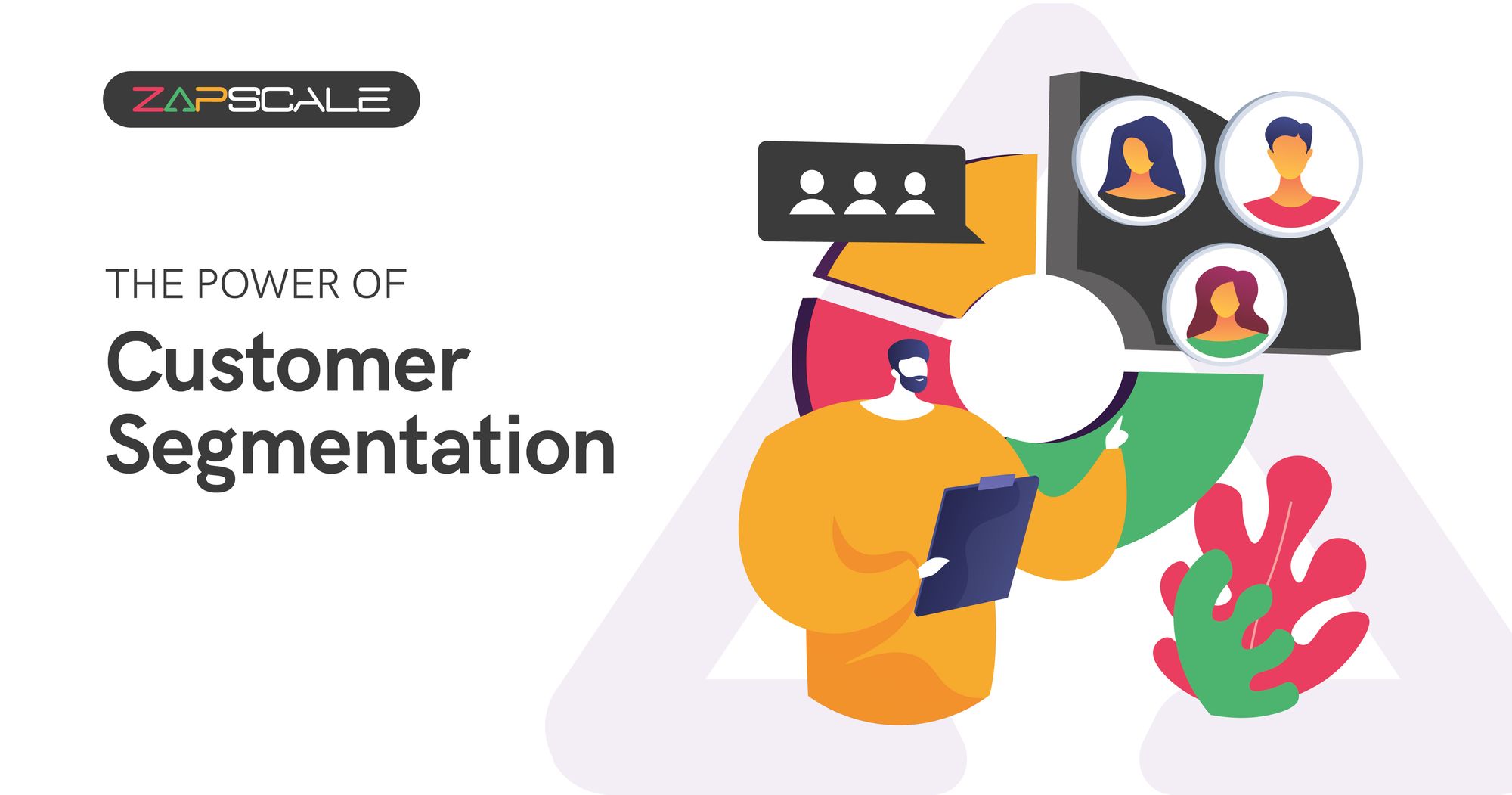CATEGORY > Customer Segmentation
Customer Segmentation: Slicing for Delightful Customer Experience

Introduction
Customers are no longer in the quest for merely good products and services. Today's customers are highly tech-savvy, desire exceptional experiences, and have high expectations from brands.
Each customer is equally unique and well-informed, so businesses have to step up their game in terms of delivering personalized Customer experience.
The golden rule of business is to know your customers before serving them. Customer segmentation is one way to slice and dice your customer base to augment customer satisfaction by creating tailored CX (Customer Experience) for each perfectly sliced segment.
So, what is Customer Segmentation, and how can brands leverage this fruitful approach to prosper and please their customers?
Let's continue reading below to learn the same slice by slice!
Customer Segmentation - Why businesses must segment customers?
As the name suggests, Customer Segmentation is all about segmenting customers into various groups to offer specialized products and services to meet the requirements and needs of each segment.
If we go by the bookish definition, then,
Customer Segmentation is a critical technique for businesses seeking to develop focused marketing strategies and increase revenue development.
With the right segmenting technique, brands can personalize their approach to a large consumer base by dividing them into various groups based on shared qualities, habits, and requirements.
Here’s why Customer Segmentation has become relevant or crucial for brands today:

1. Data-Driven Targeted Marketing Campaigns
By segmenting customers based on shared characteristics or behaviors, brands can design highly targeted marketing campaigns that resonate more effectively with specific audience segments, resulting in higher engagement and conversion rates.
2. Enhanced Product Development
With proper Customer Segmentation, businesses can gain deeper insights into the diverse needs and preferences of different customer groups, and focus on developing products and services that are better aligned with customer expectations.
3. Reduced Risk
Customer Segmentation enables brands to tap into multiple customer segments and that reduces their dependency on one particular customer group. This strategic advantage is helpful during uncertain times like shifting market conditions or evolving consumer behavior.
4. Niche Market Differentiation
Having a competitive advantage is what Customer Segmentation offers (if done correctly). It assists brands in identifying and capitalizing on unique market segments so they can create customized offers catering to specific consumer needs and preferences. Thus, separating themselves from competitors and capturing a decent market share.
5. Superior Customer Experience
Customer Segmentation allows brands to deliver tailored products, services, and interactions to specific customer segments that result in a more personalized and rewarding CX (Customer Experience) for all groups.
6. Higher Customer Retention Rate
The segmentation technique is not only valuable in terms of improving the customer experience but also implementing targeted retention strategies to address the specific requirements and concerns of distinct customer categories while resulting in greater customer retention rates.
7. Enhanced Customer Loyalty
When customer experience and Customer Retention are at their best form, Customer Loyalty automatically becomes an enormous force for sustained revenue growth.
8. Smart Resource Optimization
With Customer Segmentation, organizations can better allocate their resources and optimize marketing budgets by concentrating efforts on high-potential customer groups for maximal efficacy in the form of greater ROI.
6 Proven Strategies For Customer Segmentation
The first step to creating a Customer Segmentation strategy involves identifying prime segments so that you can do justice to each segment by serving “right’’ while not compromising on your revenues.
Here’s how you can determine key customer segments for personalizing your marketing efforts.

1. Perform Data Collection & Analytics
Data is your greatest friend in identifying vital customer segments.
Extract relevant customer data from various data collection tools like product analytics, website analytics, social media insights, customer surveys, purchase history, email engagement metrics, and so on.
Analyze this data via analytical methods like:
- Cluster Analysis: Divide customers based on common qualities or habits.
- Persona-based Analysis: Create fictional personas that represent different customer segments based on shared characteristics and behaviors.
- Decision Tree Analysis: Generate a tree-like model to predict outcomes based on input information.

2. Trace Customer Journey Maps
Customer Journey Mapping can come in handy during Customer Segmentation. With Customer Journey Maps, businesses can even identify key areas of improvement in their customer experience for different segments.
To create a Customer Journey Map, outline various touchpoints and interactions customers have with your brand across platforms.
Analyze critical stages in the customer journey to better understand pain spots, preferences, and areas for improvement.
Watch our recent podcast on Customer Journey Mapping 👇
3. Create an “Ideal Customer Profile’’ for Each Segment
To understand and segment your customer better, consider designing customer personas aka fictional representations of ideal customers in each segment.
You can use available tools online like UserForge, HubSpot’s Make My Persona, Xtensio’s User Persona Template, etc. to develop detailed profiles based on demographics, preferences, and behaviors.
These personas will serve as a roadmap for data-driven marketing strategies and enable you to efficiently address segment-specific needs.
4. Prioritize High-Yielding Segments
Not all customer segments are equal in terms of delivering revenue and growth. Measure the profitability and potential of each consumer segment using metrics like LTV (Lifetime Value), purchase frequency, and market size.
Target resources and efforts on the segments that offer the highest ROI (Return on Investment).
5. Incorporate Survey and Feedback Forms
By using surveys and feedback forms, brands may gain insights into customer preferences, satisfaction levels, and needs across many segments.
Customer Surveys and Feedback Forms can aid businesses in efficiently adjusting segmentation strategies, improving customer experiences, and tailoring products and services to establish customer satisfaction.
6. Strategize with A/B Testing
Experimentation is the key to extracting maximum benefits from your proper customer segmentation endeavor.
Deploy A/B testing mechanisms to refine your segmentation approaches and optimize marketing efforts.
After proper results from analyses, you’ll be able to create tailored campaigns for specific segments and encounter improved outcomes.
Create Gratifying Customer Experience via Strategic Customer Segmentation
Yes, you heard that right! Customer Segmentation can surely assist brands in creating phenomenal customer experience throughout all crucial segments.
Let’s learn how you can integrate the two beautifully together:

1. Craft Tailored Communication
Make use of Customer Segmentation to tailor messaging and communication channels so that customers receive offers and information that are pertinent to their interests and behavior.
This individualized strategy strengthens relationships with your brand and increases engagement.
2. Send Personalized Product Recommendations
You may more effectively understand the needs and interests of your customers by segmenting them, which will allow you to upsell or cross-sell to relevant segments.
3. Develop Targeted Marketing Campaigns
Crafting targeted marketing campaigns becomes a cakewalk via the right Customer Segmentation roadmap.
Companies should create marketing strategies that are specifically tailored to the interests, demographics, and purchasing patterns of certain customer categories.
Delivering promotions and material that is pertinent to your target audience across the appropriate channels will help you increase engagement and conversion rates while better capturing their attention.
4. Deliver Exceptional Customer Service & Support
Segment customers based on factors such as purchase history or support inquiries to deliver unique and impressive customer service and support.
You should provide proactive assistance by anticipating potential issues before they arise. This way you’ll not only upgrade Customer Experience but also foster loyalty within each segment.
Conclusion
To sum up, the foundation of customized customer experience is indeed Customer Segmentation. In today's highly competitive environment, businesses can upgrade their marketing efforts, promote loyalty, and improve customer happiness by recognizing and meeting the specific demands of each group.
ABOUT THE AUTHOR
Popular from Customer Segmentation
Quality Content,
Straight To Your Inbox!
Subscribe for the latest blogs, podcasts, webinars, and events!

Write a Blog
If you have experience in CS and
a flair for writing, we’d love to
feature you.
Write to us on
hello@zapscale.com



